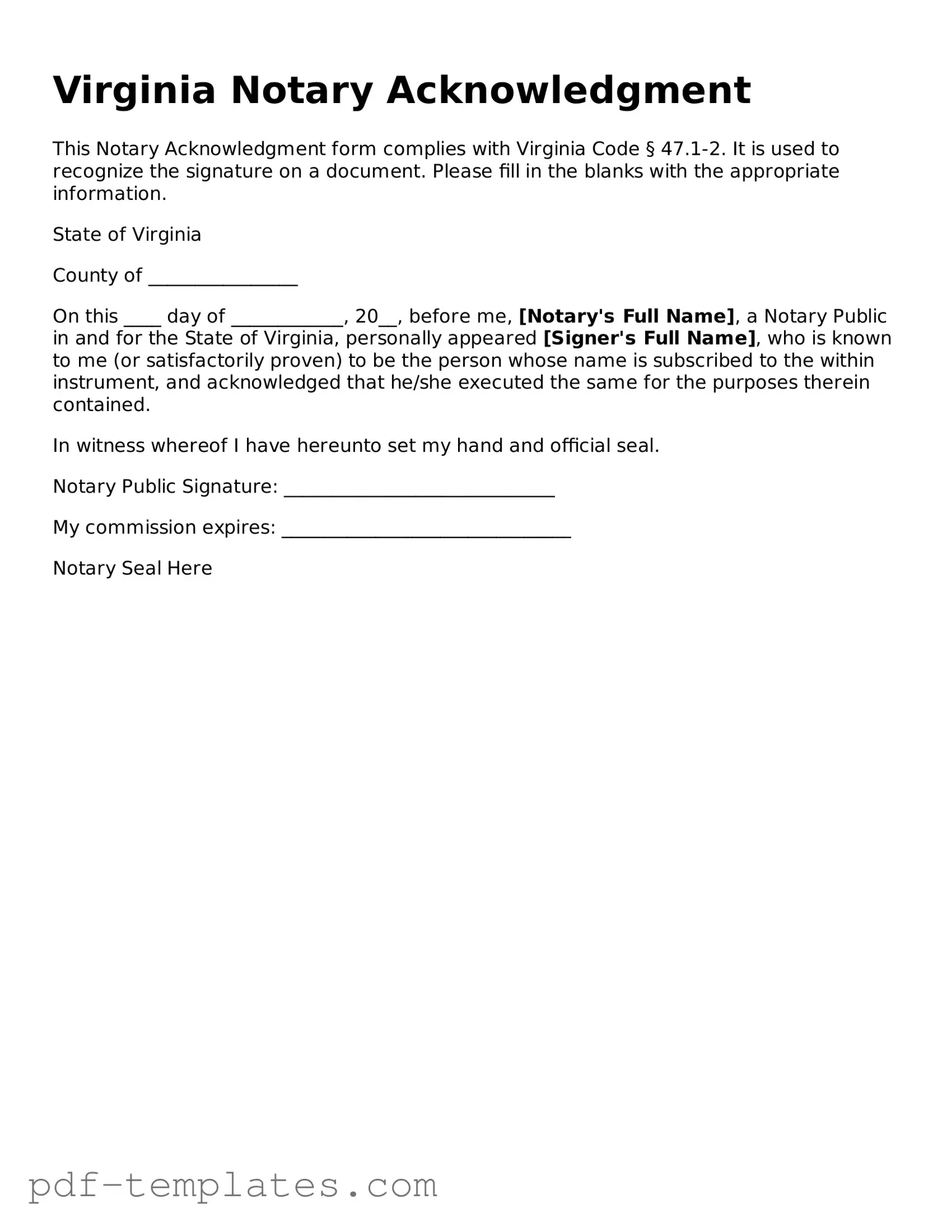Official Notary Acknowledgement Template for Virginia State
The Virginia Notary Acknowledgement form is a legal document that verifies the identity of a signer and confirms that they willingly signed a document in the presence of a notary public. This form plays a crucial role in ensuring the authenticity of important documents, providing a layer of protection against fraud. To get started on filling out the form, click the button below.
Customize Form Now
